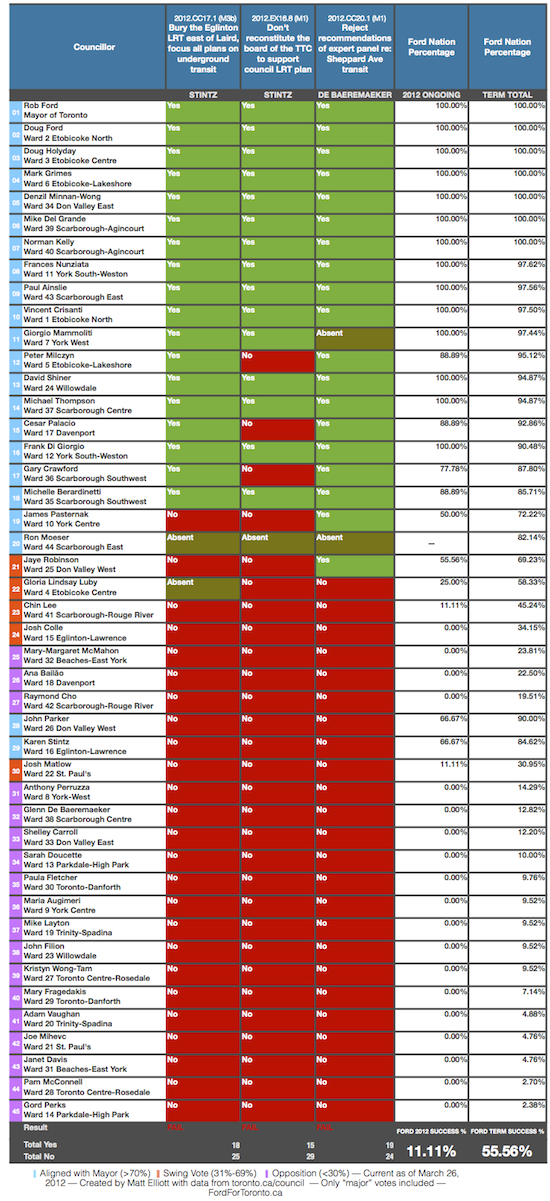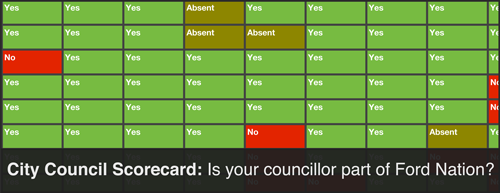Early last week, Toronto’s library workers went on strike. Everyone assumed they would. The city and the library have been at each other’s throats for much of the last year – through budget cuts and branch closures and threats of service reductions. The animosity between the library union and the Ford administration never quite got to the point of outright profanities and name calling, but it got pretty damn close.
If you had asked me on the weekend, I would have predicted a long and drawn out work stoppage. Libraries are vitally important to the city – especially when it comes to youth, seniors and low-income people – but their absence is less likely to cause an emotional response than, for example, a lack of garbage pick-up or reduced EMS response times. The city’s negotiators had a lot of breathing room on this one.
Which is why this, as reported by the Toronto Star’s Liam Casey, comes as a bit of a surprise:
Toronto Public Library workers have reached a tentative deal with the library board, according to its union.
The workers went on strike March 19, closing all 98 branches.
CUPE spokesperson Cim Nunn said the two sides have been meeting since the strike began and reached a deal through “long, hard work.â€
via Toronto library strike: Union and board reach tentative deal to end strike | Toronto Star.
And, lo and behold, it looks like the city has found common ground with much of Local 79, the city’s inside workers. Yes, there’s still work to be done with part of that union, but we’re worlds away from speculation last summer that said the mayor would jump straight to a lockout, damn the torpedoes.
Like with the out-of-nowhere deal signed with the outside workers at CUPE 416 last month, these seemingly quick resolutions have got to be seen as a victory for the Ford administration. Contrary to the expectations of a lot of people who claim to have their finger on the pulse of things down at City Hall – including, um, me – the mayor has done reasonably well with labour, wringing the kind of concessions he promised without declaring bloody war on the public sector.
The unions deserve credit too, of course. What we’re seeing now – speedy resolutions to labour issues, a willingness to concede on certain sticking points – is a tacit admission from union leadership in this city that they really screwed things up in 2009, when workers went on strike for 40 days before ultimately conceding and accepting a deal. The public sector seems to know that they need to rebuild political support. And so they’re being conciliatory — often preemptively so. As far as workable long-term strategies go, this is the best the unions have.
Still, if Ford’s been pretty smart on the labour file, he’s been totally inept at turning that intelligence to his political advantage. While Deputy Mayor Doug Holyday and the negotiating team at City Hall have been knocking out deals with various Locals, Ford’s been tilting at transit windmills and repeating the word “subways” so often he’s probably broken an obscure Guinness record for word repetition.
With the subways/LRT debate taking all the headlines, Ford’s done little to attach himself to the negotiations. Instead of holding press conferences and giving interviews trumpeting his ability to wring cost-saving concessions from city workers and open the door for the kind of contracting-out he promised in his campaign, the mayor has been almost invisible in this process.
You could make the argument that the mayor’s invisibility has been a blessing for the city’s negotiating team. Ford’s not particularly well-liked by a lot of union members, and his comments – followed, inevitably, by his brother’s comments – could serve only to add fuel to fire. The Fords have an uncanny ability to make any situation worse just by talking about it.
The other side of the coin, however, says that the mayor is a politician who’s been taking a beating lately. He desperately needs some checkmarks in his “win” column. These labour negotiations could provide that. Yes, it makes sense to maintain some space between the mayor and labour negotiations, but there’s a fertile middle ground between invisibility and overbearing involvement that would still allow Ford’s star to shine in the wake of signed deals.
The only real explanation that makes sense to me is one that harkens back to an underlying theme through Ford’s mayoralty: the mayor is simply understaffed. He doesn’t have the resources in his office to effectively strategize on more than one issue at a time – they can’t walk and chew gum at the same time. His advisors are hilariously ill-equipped to effectively manage policy and communication at the level demanded by Ford’s position. They’re obviously lousy at marshalling support at council and they don’t seem to have many cards to play with the media either, except for with a few names at the Toronto Sun and on the broadcast side. Even simple tasks like ordering business cards or keeping up with municipal conflict of interest law have led to major (and public) screw-ups.
But, hey, they are pretty good at getting back to constituents who have problems relating to sizeable piles of dirt.
Ford’s office has copped to the issue somewhat – there’s money for a new position in the mayor’s office in the 2012 budget. But that may be too little too late. Change needed to start soon after the Port Lands debacle. There have been at least a half-dozen debacles since then, with no sign of improvement. Meanwhile, Ford still lists slashing his own office budget as a major achievement.
But back to the labour issue: signed deals with all the city’s major unions would stand as an undeniable success for the Ford administration. But it doesn’t amount to much if his office isn’t able to effectively communicate that success – and if  it all gets drowned out by the noise and controversy of other things.










